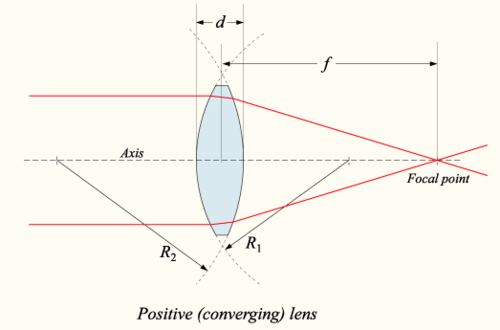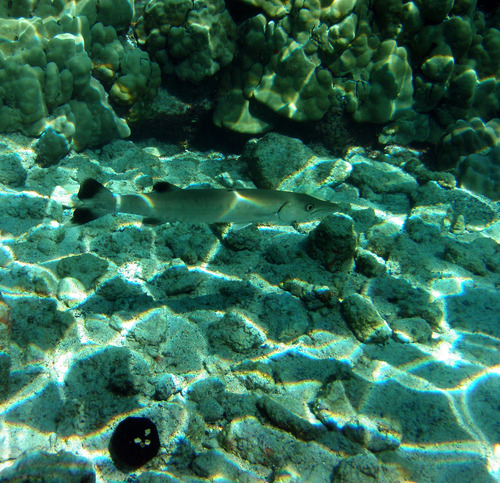The title of this blog post is an homage to a well written and excellent book on the subject by J.F. Nye.
In my last post I talked about a picture I took of a laser shining through a plasma:

and I mentioned that the rippling patterns were due to a phenomenon in nature where light is focused to produce ‘caustics’.
Most of the time, it’s reasonable to treat light as ‘rays’, straight lines that bounce off mirrors, get deflected by lenses or stopped by walls. In undergraduate physics, we dealt with thrilling diagrams like the one below, full of geometry and lines and angles.

By DrBob, CC-BY-SA-3.0 via Wikimedia Commons
These diagrams give the rather convincing impression that you need beautifully made lenses and accurate measurements to focus light and move it around, which is really quite far from the truth. In fact, it’s really quite hard to keep light going in straight lines in any real world situation. To get a focal point (or a ‘bright spot’) all you need is a place where multiple rays of light meet. If you start out with a load of rays of light going the same direction, this means some of the rays need to be bent so they point towards other rays.
Light rays bend when the speed of light changes. As the speed of light is different in different materials, this usually means light rays bend when they enter a new material. For example, in glass, light moves about two thirds as fast as in air. So how does focusing occur in nature?
Imagine a lake on a sunny day. Light rays from the sun hit the surface of the lake, all going in the same direction. If it’s a calm day and the lake is perfectly flat, all the rays are bent the same amount, and none of them cross over. The lake bottom is uniformly lit.
Now imagine the lake surface is not flat – maybe there are ripples from a passing boat. The rays of light all hit the surface going in the same direction, but the ripples bend the rays so by the time the hit the lake bottom, some rays hit the same spot. In these places, there is more light.

“Great Barracuda, corals, sea urchin and Caustic (optics) in Kona, Hawaii 2009” by Brocken Inaglory. CC ASA 3.0.
The dark spots are where fewer rays hit, because the rays have been bent away from those spots. Overall, there’s the same amount of light, it’s just been redistributed. These patterns are called ‘caustics’ – they are very beautiful, and occur everywhere in nature.
But what do lakes and sunlight have to do with plasmas and lasers? In my experiments, the laser acts like the sun, producing nice, strong rays all going in the same direction. The plasma is like the lake surface – rippled and uneven. As the rays of laser light enter the plasma, they are distorted and bent in different ways. The rays are actually bent all the way through the plasma because the speed of light changes quite a lot throughout*. When they exit on the other side, the rays are going in all sorts of directions. Some of them are going off at such odd angles that the camera doesn’t capture them – these rays hit the walls or floor of the room.

Those rays that are still going straight enough to be caught by the camera lens make up the photo at the top of this post. It looks like a rather random mess, but we can tell a few things – the ripples in the plasma will produce ripples in the light that are about the same size, so by looking at the photo we can tell how big the ripples in the plasma are. There are also dark vertical bands at the edge of the column of plasma. This is where the speed of light changes dramatically, and the rays of light are bent at a large angle so that they no longer reach the camera. By looking for these dark bands we can work out roughly how wide the column of plasma is.
We do use plenty of lenses in our lab to make light go where we want it to. But sometimes we can learn a lot when we let the plasma bend the light rays for us. The results can be chaotic and hard to interpret, but the pictures produced are beautiful and we can learn something if we study these images carefully.
*The speed of light is decreases as the density of the plasma increases. Because of this, light rays bend more dramatically when the density of the plasma changes sharply.